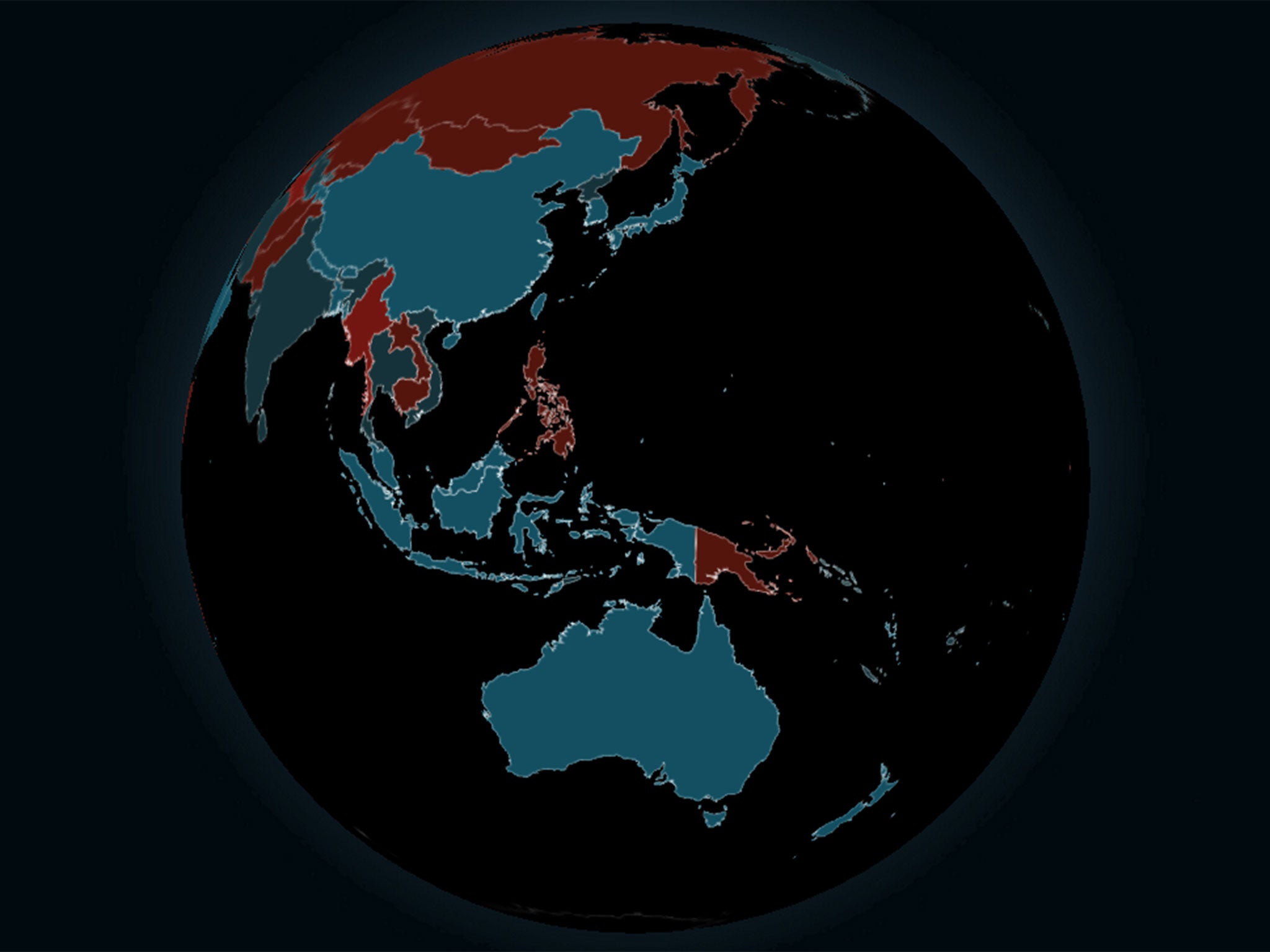Murder map shows where in the world you are most likely to be a victim of homicide
Countries in Latin America top the list

Your support helps us to tell the story
From reproductive rights to climate change to Big Tech, The Independent is on the ground when the story is developing. Whether it's investigating the financials of Elon Musk's pro-Trump PAC or producing our latest documentary, 'The A Word', which shines a light on the American women fighting for reproductive rights, we know how important it is to parse out the facts from the messaging.
At such a critical moment in US history, we need reporters on the ground. Your donation allows us to keep sending journalists to speak to both sides of the story.
The Independent is trusted by Americans across the entire political spectrum. And unlike many other quality news outlets, we choose not to lock Americans out of our reporting and analysis with paywalls. We believe quality journalism should be available to everyone, paid for by those who can afford it.
Your support makes all the difference.A Brazilian think tank has released a macabre interactive map, which exposes the nations where people are most likely to be murdered – with Latin American nations coming top.
The Homicide Map, compiled using the most recently available date from 2012, lays bare how a third of the world’s 450,000 murders were against victims in Central America, South America and the Caribbean, despite the fact that less than a tenth of the world’s population lives in this region.
And when specific nations are considered, El Salvador, Venezuela and Brazil are the places where murders are most common, according to the map by the Igarapé think tank.
This means a person is 25 times more likely to be murdered in Brazil than in the UK.
Honduras has the highest murder rate in the world (Image: Igarapé)
Read more: The most miserable countries in the world revealed
The most content and saddest countries in the EU
These are the world's most and least happy countries
The 12 most sexually satisfied countries in the world revealed
Robert Muggah, the founder of the think tank, explained in a report on the Igarapé website that violence tends to be highly concentrated, meaning victims are most likely to be young, black or mixed race men who live in poor communities.
In these area, quick expansion is compounded by poor regulation, and an apparent lack of interest from local authorities.
“The perception in many cities that everyone is equally at risk is flat-out wrong. In many US cities, for example, less than 5 per cent of street addresses account for 75 per cent of violence. In Bogotá, just 2 per cent of street addresses are where 98 per cent of homicides occur," he said.
However, the research also shows how dire situations can gradually improve. Thanks to a greater focus on public safety, murder rates in cities once synonymous with death, including Medellín, Bogotá, São Paulo and Rio de Janeiro, have dropped by more than 60 per cent over the past two decades.

The comprehensive interactive map, which draws on information from the UN and statistics from respective governments, confronts users tragic data on murders by country, year, age of victim, gender, and the type of weapon used.
Igarapé hopes policymakers and researchers can use the tool to tackle the startling figures. It concludes that high murder rates can be tackled by involving local communities in decision making, and the deploying large numbers of officers in areas with high murder rates.
This technique, called “hot policing”, reduced the homicide rate in São Paulo from 42.2 per 100,000 people in 2000 to 13.9 per 100,000 in 2010, according to the think tank.
Subscribe to Independent Premium to bookmark this article
Want to bookmark your favourite articles and stories to read or reference later? Start your Independent Premium subscription today.
Join our commenting forum
Join thought-provoking conversations, follow other Independent readers and see their replies
Comments